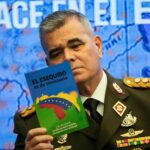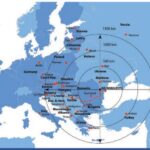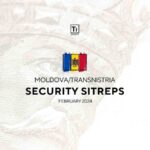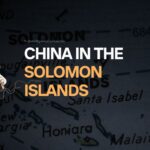Urgent Briefing – The Secretary General of the North Atlantic Treaty Organization (NATO) has conducted a diplomatic tour to visit the two regional allies in Asia-Pacific, namely Japan and the Republic of Korea (ROK, ‘South Korea’). This raised a legitimate debate regarding NATO’s prospects in a region so far away from the Euro-Atlantic realm.
Visits to South Korea and Japan
Jens Stoltenberg arrived on October 30, 2017 in Tokyo for a three-day visit. Appointed in 2015 as Secretary General, this was his first tour in Asia-Pacific, throughout which he reinforced the Alliance’s partnership with Japan and South Korea. Having talked with the Japanese Defense Minister, the two agreed on the potential to expand cooperation in the areas of maritime security and cyber defense, additionally to the substantial efforts already undergone. On November 1st, he traveled to South Korea for a two-day trip to meet with the Foreign Minister, and to address the North Korean threat. He made bold comments about this issue, condemning Pyongyang’s nuclear and ballistic programs; Stoltenberg referred to them as a threat to ‘international and regional security’, calling on Kim Jong-Un to abandon this pursuit.
NATO’s Asia-Pacific policy
Sine the conclusion of the Cold War, the Alliance created a wide range of partnership options through which it pursued fostering good relations with states across the globe. The largest such framework is Euro-Atlantic Partnership Council (EAPC), a 50-nation multilateral forum that encompass diverse actors, from Russia, the Kyrgyz Republic, and Ukraine, to Austria or Armenia. The Mediterranean Dialogue is eligible for states situated in Northern Africa or the Levant, as the Istanbul Cooperation Initiative (ICI) welcomes several Gulf states as Bahrain, Kuwait, Qatar, and the United Arab Emirates (UAE). Additional to these frameworks, there are individual options that are loosely referred to as ‘Partners across the Globe’, and provides interested peers with tailored diplomatic protocols that facilitates a closer engagement to NATO. Japan and the Republic of Korea (ROK) are one of those states. And following Washington’s model, they are NATO’s key partners in shaping an Asia-Pacific policy. Evidently, the United States has a leading role in applying and conceptualizing such a policy, but the other 28 states also have a decisive input. It is widely known that NATO has a history of conducting operations and crafting strategies in rapport with issues and regions outside the Euro-Atlantic space in the post-Cold War era. Operation Ocean Shield (Indian Ocean, Bab-el-Mandeb strait), ISAF (Afghanistan) or Iraq Training Mission have cemented the Alliance’s outlook towards the external space amid the 21st century security environment and emerging threats. The 2010 Lisbon Summit formally marked this transition by adding Crisis Management and Cooperative Security to NATO’s core values, in addition to the original task of Collective Defense. The 2010 New Strategic Concept is relevant in application to all issues and challenges, while keeping the focus on cooperative efforts with regional peers.
There has been no official military presence in the waters of Asia-Pacific before, nor substantial diplomatic effort in the region under a NATO framework. This marks Stoltenberg’s tour as a milestone in the Alliance’s ‘coming-of-age’ towards the region. The visits to Japan and South Korea can be regarded as a natural sign of solidarity towards NATO’s biggest financial contributor and strongest member, the United States. And that extensively, the effort was an additional deterrence tool in applying pressure towards the North Koreans.
North Korea: a global problem
In a speech held at the National Press Club in Tokyo, October 31st, Jens Stoltenberg outlined the ‘new geography of danger’ emphasizing the global dimension of the North Korea threat and the necessity for a united, potentially stronger front, against Kim Jong-Un regime. Mr. Stoltenberg called on Pyongyang to “abandon its nuclear program once and for all”; to “suspend the development of ballistic missiles”; and to “refrain from further testing”. He also reiterated that “NATO strongly supports a peaceful, negotiated solution to the crisis on the Korean Peninsula.” He also added that “achieve this, pressure is key”, before acknowledging that Japan is NATO’s “natural partner”. (read the entire speech here, as delivered)
Asked whether an North Korean attack on the island of Guam, a US territory, would trigger Article 5, he refused to respond. However, he did mention that NATO’s European Defense system is ready to counter any possible ballistic missile launched from the Korean peninsula.
Key Judgements
NATO is right to have concerns regarding the North Korean problem. The passive and impotent efforts throughout the past three decades have allowed the totalitarian regime from Pyongyang to develop nuclear weapons, and now, even sophisticated means of transporting them towards enemy targets. The strike range of those ballistic missile do not only extend towards California, Alaska or some Pacific islands, but also over Europe. NATO’s concerns are legitimate and worthy of being shared at the strategic level by all 29 members. While the diplomatic tour in Japan and South Korea can well be accounted as a pressure force towards North Korea, and as a solidarity gesture towards the United States, there is the potential for more than just an episodic touch. Given the rise of China in the international stage and the risks it poses for global trade and regional stability, notably given the standoff in the South China Sea, it’s fair to assume that NATO is considering widening its projection. Benefiting from predictable and strategic partnerships with capable actors in the region, namely Australia, New Zeeland, Japan and South Korea, and its utmost important member in the driving seat, the United States, NATO holds the incentives for a long-term game in respect with the Asia-Pacific theater.
Briefing is a short-to-medium assessment that presents a sharp overview of a recently occurring event with the objective of providing timely information with additional comments, rather than a comprehensive in-depth analysis. Such a paper does not regularly exceed 1,100 words.
Founder of T-Intelligence. OSINT analyst & instructor, with experience in defense intelligence (private sector), armed conflicts, and geopolitical flashpoints.









